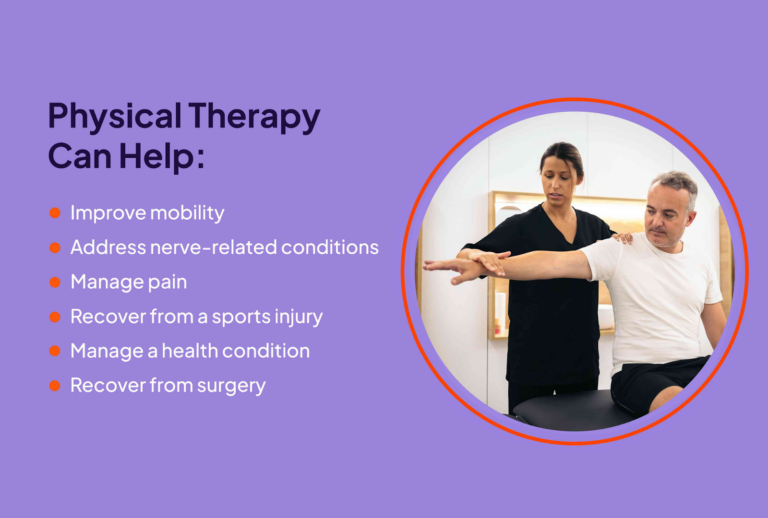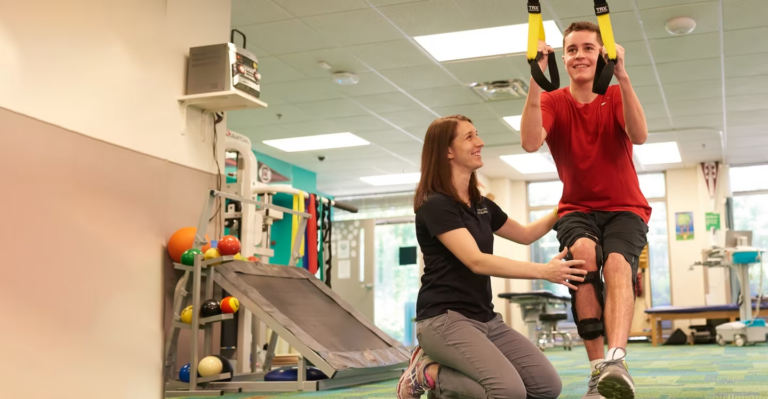
Healthcare specialty, physical therapy concentrates on restoring movement and functions of the body through specialized exercises and treatment. There are many advantages associated with this practice, such as pain elimination; better mobility; and quick recovery from injury, among others. Early intervention is key to success here because waiting may worsen the situation or even become untreatable. This field serves different persons, including players; patients who have gone through surgery or accidents, and those suffering from long-term pains/aches or limited movement ability due to various reasons.
What are common signs that you might need physical therapy?
Common signs include persistent pain, limited mobility, and difficulty performing daily tasks. Physical therapy can help with recovery from injury, surgery, or chronic conditions.
A visit with a healthcare provider should be able to determine whether therapy is needed on the symptoms shown and the functional limitations reported. In case you have continuous pain that doesn’t seem to improve with some rest and medication or if you are having reduced ranges of motion at joints, then the case will be taken care of by physical therapy. Trouble in performing everyday activities like walking, climbing stairs, lifting, etc., may also call for professional help.
How does physical therapy help with injury recovery?
Physical therapy aids injury recovery by improving strength, flexibility, and range of motion. Therapists design personalized exercise programs to target affected areas, reducing pain and preventing re-injury.
This increases blood flow to the affected area, promoting tissue repair, which aids in quick healing. It involves manual therapy techniques, targeted exercises, and modalities such as heat or cold therapy to address inflammation and promote healing. Restoring function to the injured muscle, ligament, or tendon, allows a patient to return to normal activities safely and effectively.

Can physical therapy prevent surgery?
Physical therapy can prevent surgery by addressing underlying issues, improving function, and reducing pain. It strengthens muscles and improves joint stability, which may eliminate the need for invasive procedures. Early intervention is key to maximizing therapy’s preventative benefits.
Treatment early on can help gain the most from therapy’s preventative effects. Conditions like osteoarthritis and herniated disks can be managed by physical therapy; in these, the strengthening of the muscles around those parts and increasing flexibility relieves the symptoms. Many times, restoring the normal movement pattern by reducing the stress to joints may sometimes obviate surgical intervention.
How does physical therapy assist with chronic pain management?
Physical therapy assists with chronic pain by addressing its source through exercises, manual therapy, and modalities. It improves flexibility, strength, and posture, reducing pain and enhancing quality of life.
Therapy teaches self-management techniques to deal with persistent discomfort. The physical therapist examines one’s patterns of motion to find out what’s wrong and what the pain contributors are after which an individual exercise plan is designed to eradicate the cause.
Such techniques as dry needling or ultrasound therapy might be applied in order to better control pain. Strategies taught in this area include methods of pain management in the form of ergonomic adjustments and alleviating techniques of stress.
What role does physical therapy play in post-surgery recovery?
Physical therapy plays a crucial role in post-surgery recovery by restoring function, reducing swelling, and preventing complications. It involves exercises to regain strength and flexibility and promotes a safe, gradual return to activities.
Therapy supports healing by minimizing scar tissue formation. To regain flexibility and develop muscular strength, physical therapists assist patients to move around and do some stretching exercises after surgery. Massage and joint mobilization are applied in techniques to create less stiffness in the body, allowing blood to circulate well, hence making recovery effective without any complications.

How can physical therapy improve mobility for older adults?
Physical therapy improves mobility for older adults by enhancing balance, strength, and flexibility. It addresses age-related conditions like arthritis and osteoporosis, reducing fall risk.
A therapist designs a personal exercise program to help the elderly maintain independence and improve their quality of life. For seniors, muscle weakness and joint stiffness, commonly underlying causes of mobility issues, maybe the main focus of physical therapy. Balance exercises and gait training prevent falling, and strength-building activities enhance function in day-to-day life. Regular sessions give support to continued mobility and activity.
How do I determine if physical therapy is right for me?
Determining the need for physical therapy involves assessing symptoms, consulting a healthcare provider, and evaluating functional limitations. Persistent pain, decreased mobility, and difficulty with daily activities are key indicators.
Professional advice can, therefore, be sought to guide one in decision-making. A health care provider can evaluate your condition and refer you for physical therapy if it is likely to improve your symptoms and function. In cases of surgery, injury, or chronic conditions that affect movement, PT can be very useful. This also is good to discuss with a therapist about goals and expectations.
Wrapping Up!
Physical therapy should be thought of as a solution/answer when one has continuously suffered, can’t move; loses balance, or is still recovering from an injury while managing the chronic disease. Personalized plans aimed at enhancing performance and reducing pain may be created by certified therapists. Therefore, towards improving your health do not be afraid to. Use physical therapy as a means of taking back authority over your welfare and living a fulfilled life that is more active.

